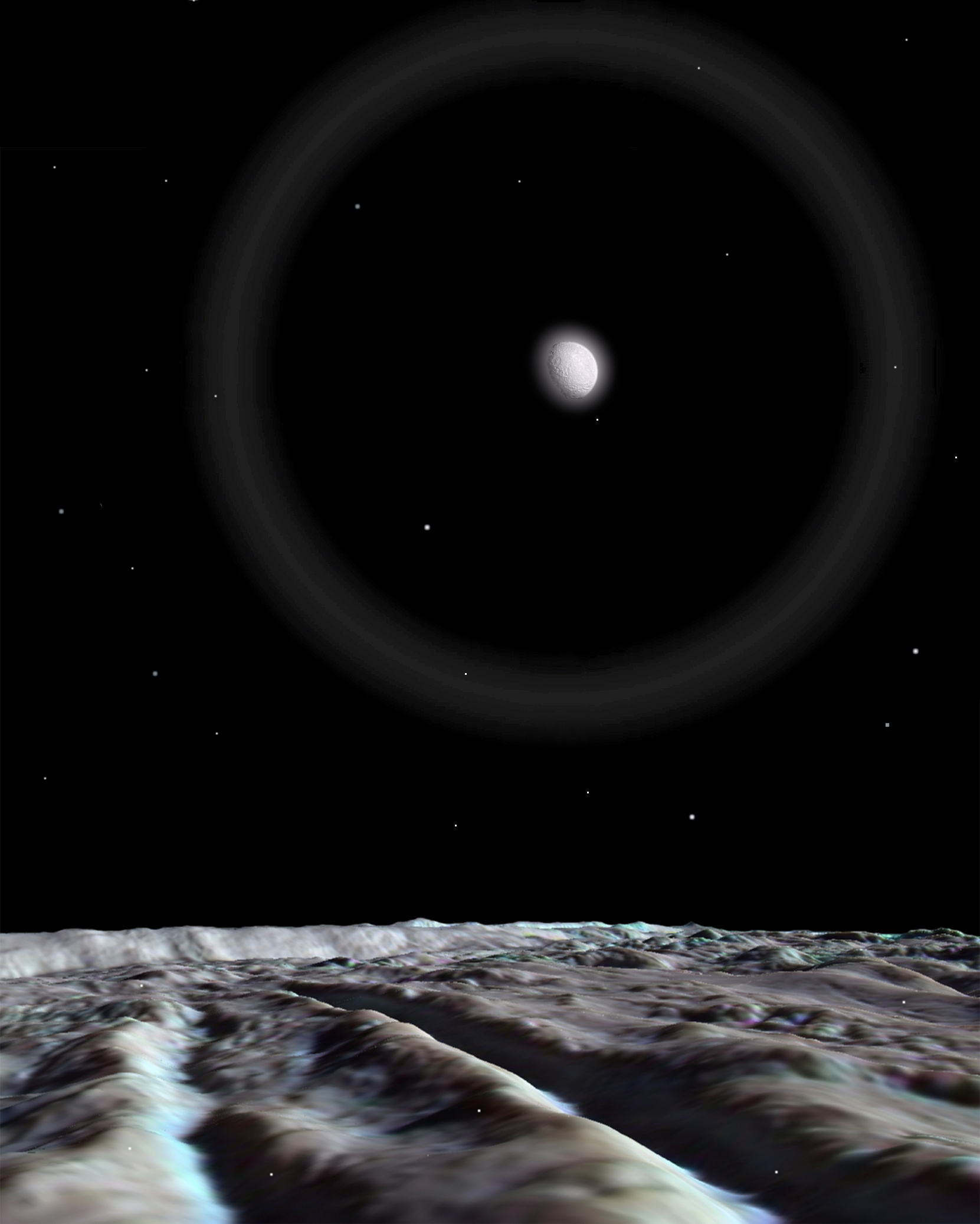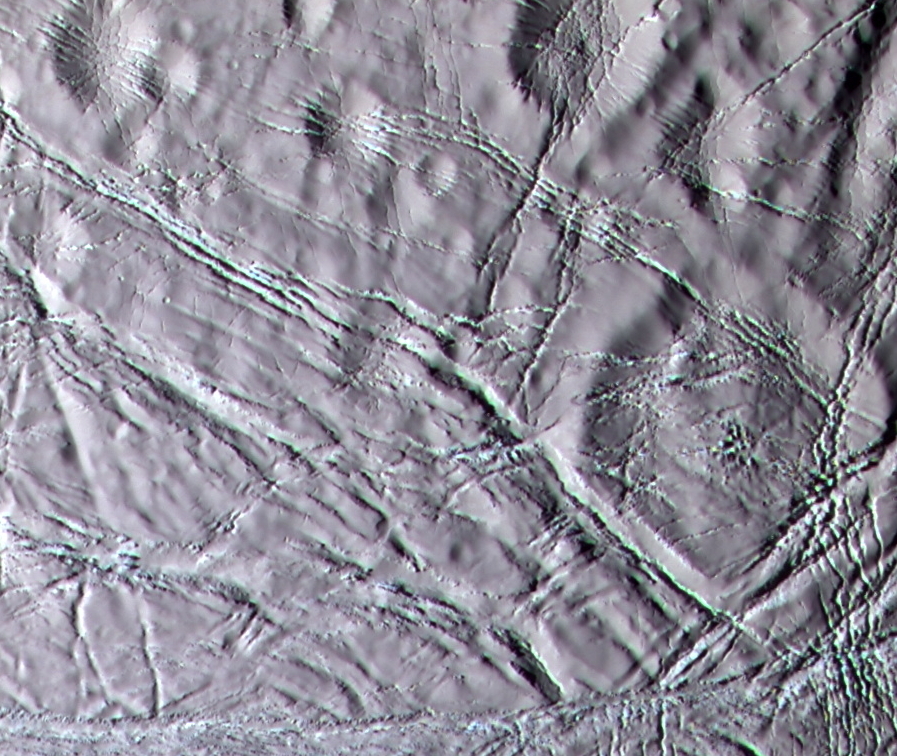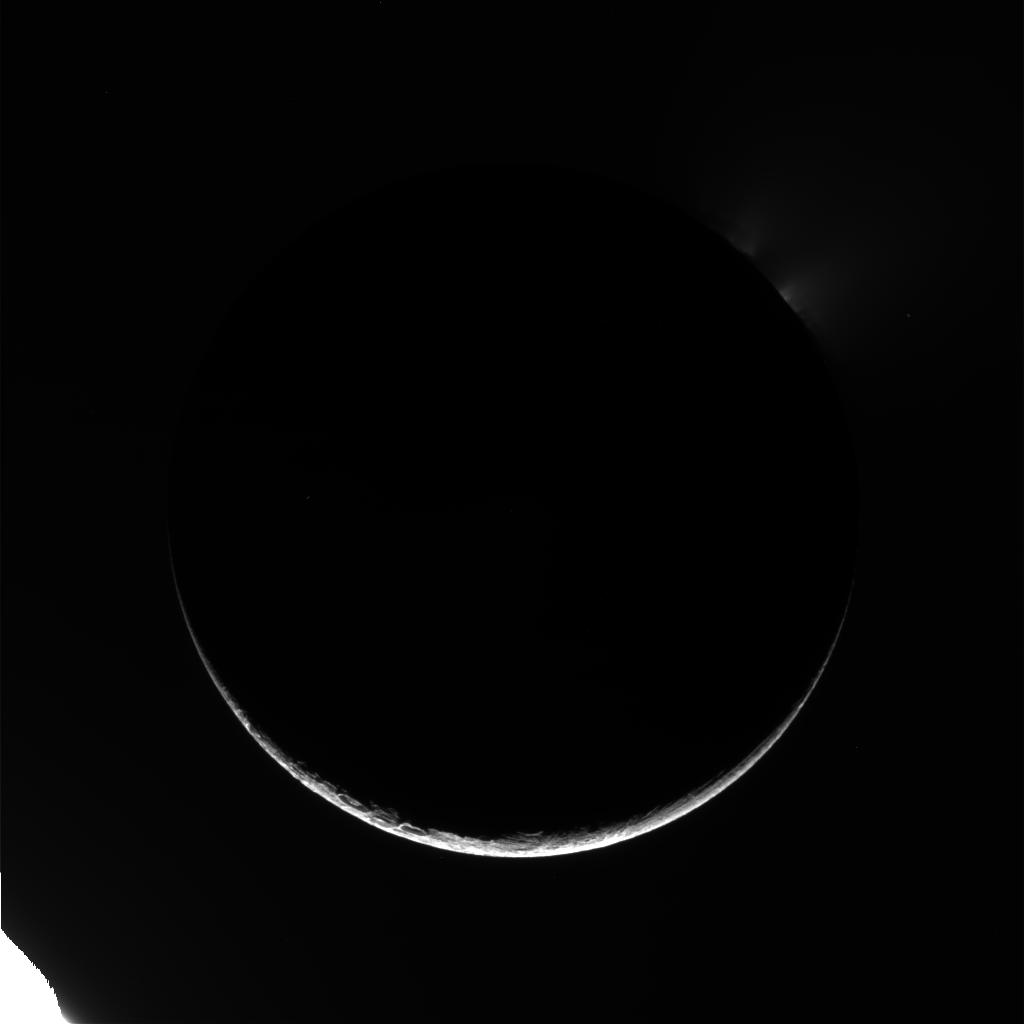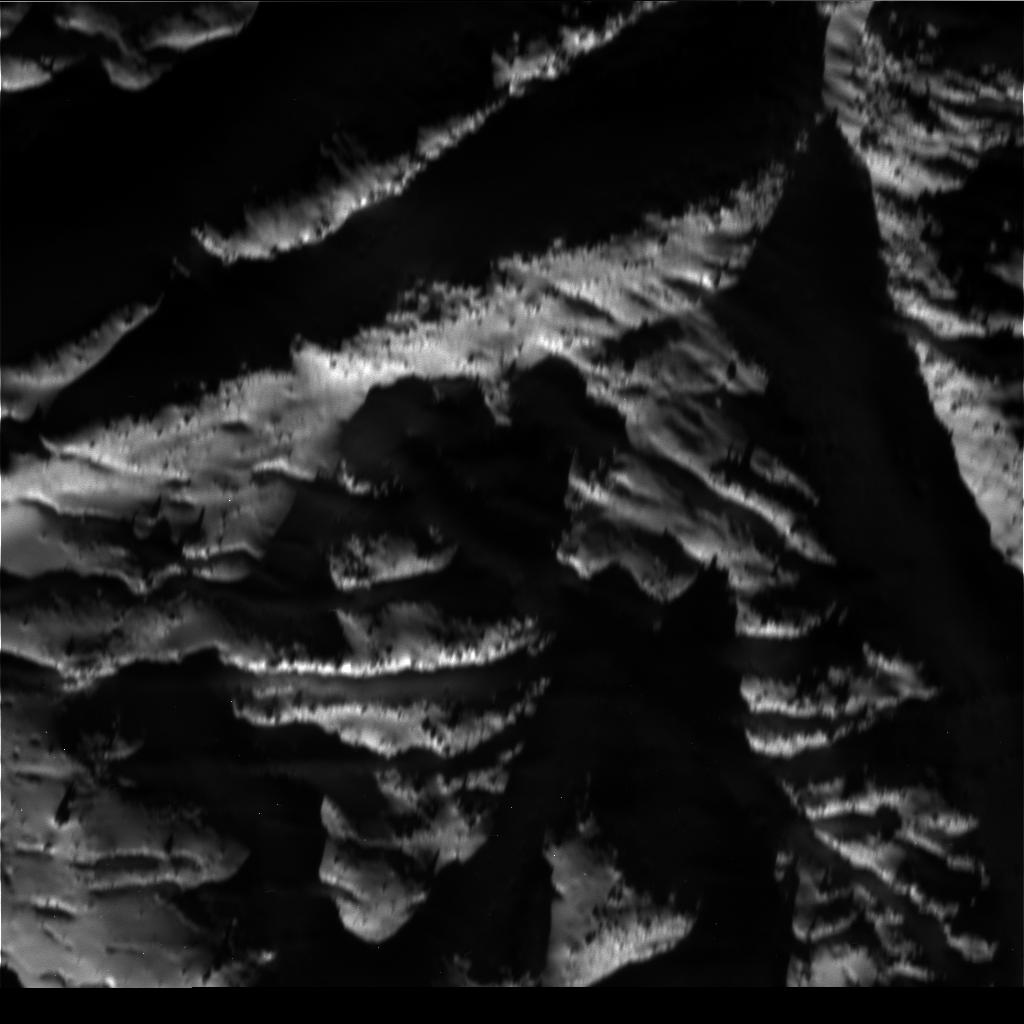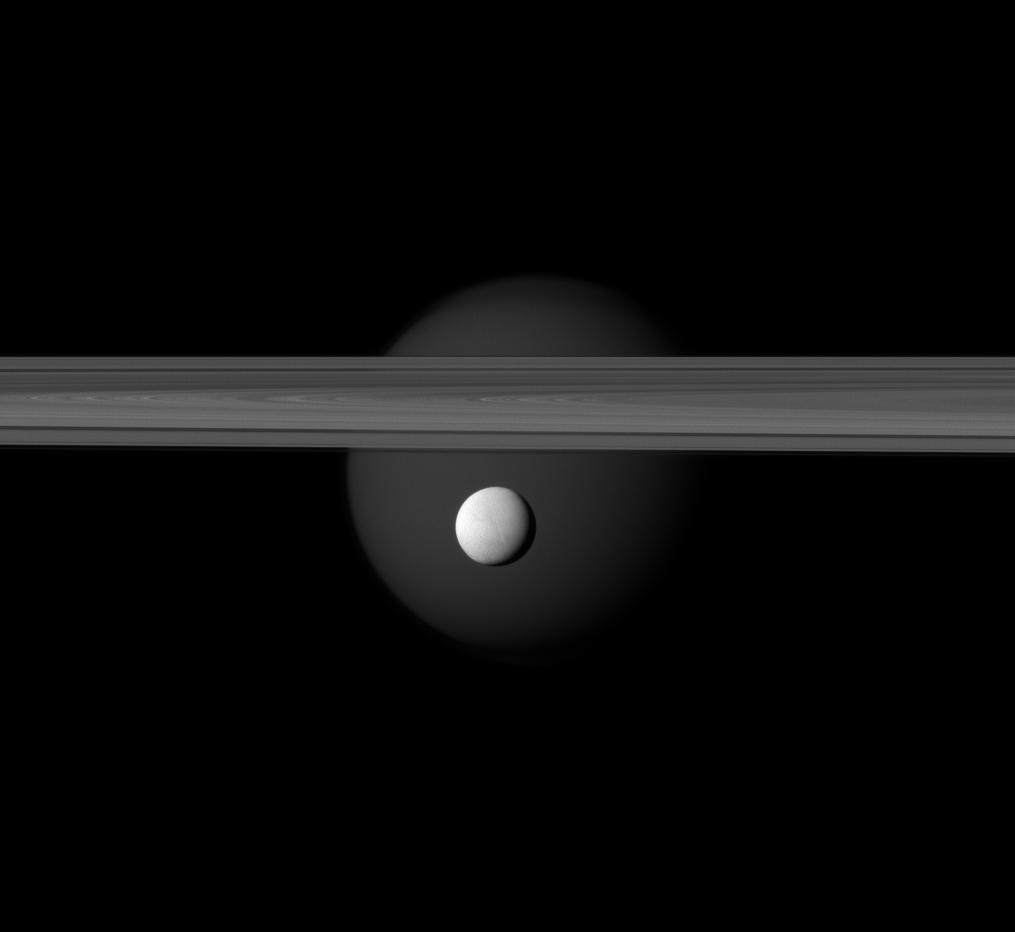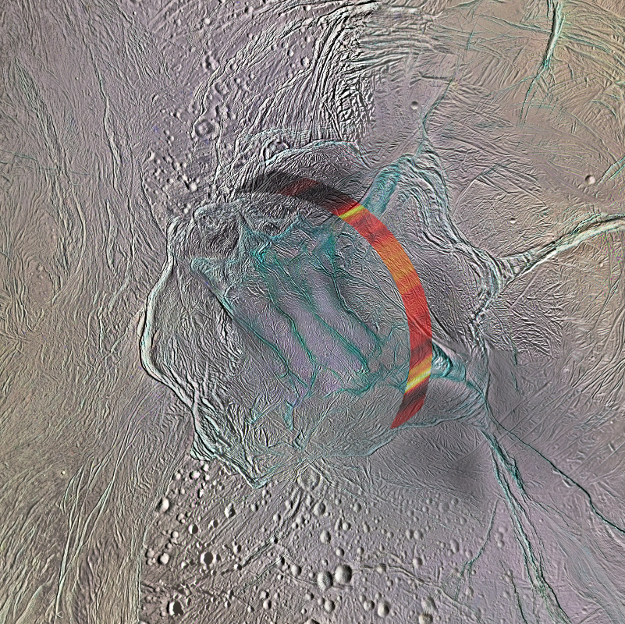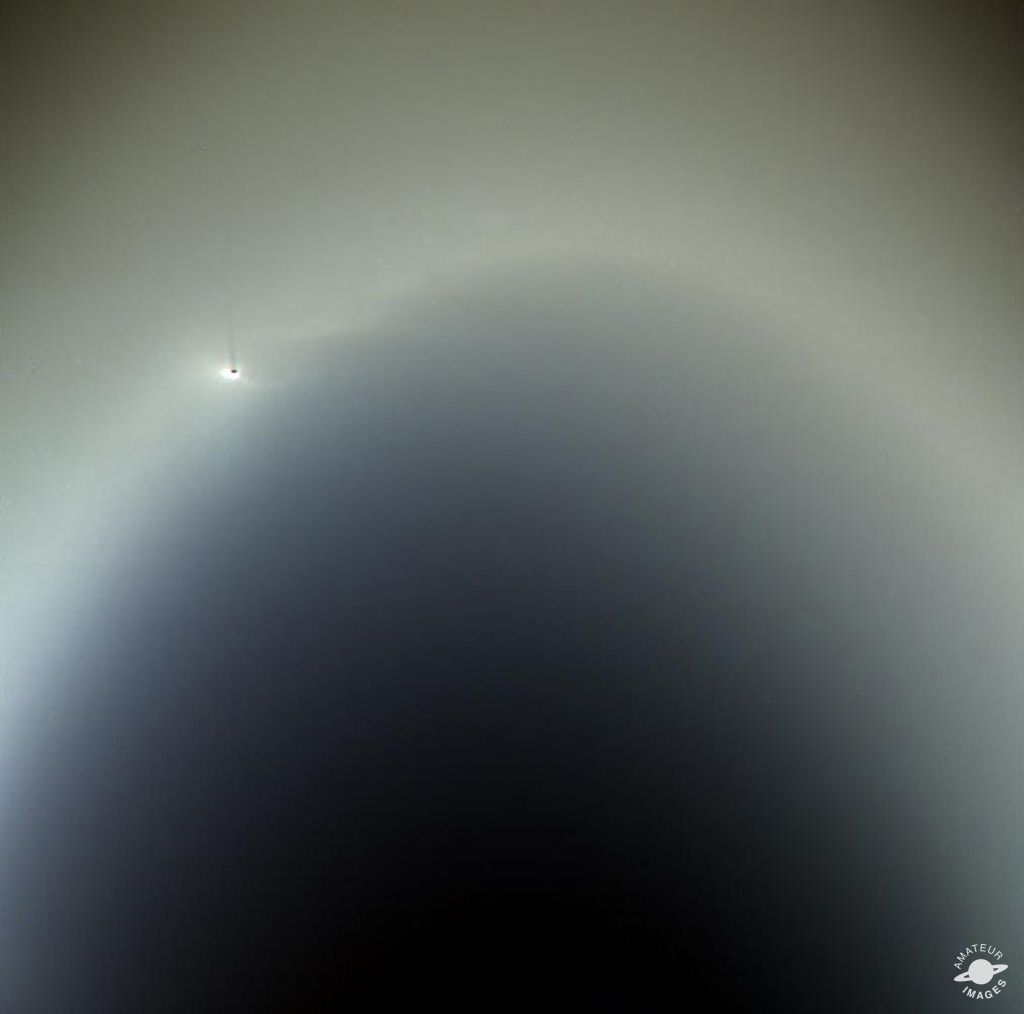Photos: Enceladus, Saturn's Cold, Bright Moon
Snow on Saturn's Moon Enceladus
Artistic rendering of the surface of Enceladus. One of the active "tiger stripe" ridges crosses the scene in the foreground, its active areas a strong blue color indicating freshly exposed water ice. A hazy, bright Mimas hangs over the scene, surrounded by a faint moon ring or halo formed by refraction of light by fine, snowy particulates slowly falling to the surface.
Enceladus Snowy Landscape
Cassini color image of "snowy" landscape of Enceladus. This terrain lies north of the geologically active south polar ridges and features a rolling terrain crosscut by narrow fractures.
Snow on Enceladus Could Be Skier's Paradise
Perspective view of "snow"-covered slopes of Enceladus. This heavily fractured terrain lies north of the edge of the active south polar region.
Dark Enceladus Arc
This photo of Saturn's moon Enceladus was taken on April 14, 2012 and received on Earth April 15, 2012. The camera was pointing toward Enceladus at approximately 120,808 kilometers away, and the image was taken using the RED and CL2 filters. This image has not been validated or calibrated.
Enceladus Terrain
The photo of Saturn's moon Enceladus was taken on April 14, 2012 and received on Earth April 15, 2012. The camera was pointing toward Enceladus at approximately 185 kilometers away, and the image was taken using the CL1 and CL2 filters. This image has not been validated or calibrated.
Saturn's Rings, Titan and Enceladus
Saturn’s icy moon Enceladus hangs below the gas giant’s rings while Titan lurks in the background, in this new image taken by the Cassini spacecraft on March 12, 2012.
Cassini Measures Area Near Enceladus' Tiger Stripes
Shown in red is the 310-mile-long (500 kilometers) strip of land near the Saturn moon Enceladus' south pole. NASA's Cassini probe studied this feature with the probe's radar instrument during a November 2011 flyby. The snaking, bluish-green lines are Enceladus' "tiger stripe" fractures.
Breaking space news, the latest updates on rocket launches, skywatching events and more!
Enceladus
Saturn's moon Enceladus is visible through its E Ring in this composite of images taken by NASA's Cassini spacecraft on July 19, 2013.

Space.com is the premier source of space exploration, innovation and astronomy news, chronicling (and celebrating) humanity's ongoing expansion across the final frontier. Originally founded in 1999, Space.com is, and always has been, the passion of writers and editors who are space fans and also trained journalists. Our current news team consists of Editor-in-Chief Tariq Malik; Editor Hanneke Weitering, Senior Space Writer Mike Wall; Senior Writer Meghan Bartels; Senior Writer Chelsea Gohd, Senior Writer Tereza Pultarova and Staff Writer Alexander Cox, focusing on e-commerce. Senior Producer Steve Spaleta oversees our space videos, with Diana Whitcroft as our Social Media Editor.
